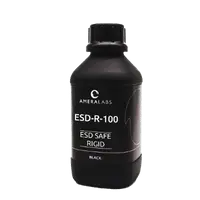Your Guide to Growing Miniature Business
Scaling miniature production has become more achievable than ever, thanks to advancements in 3D printing. What started as a fun hobby has grown into a booming industry, especially in tabletop gaming, collectibles, and custom items. As the demand for high-quality miniatures continues to rise, businesses need to find a way to scale up production without sacrificing quality. That’s where 3D printing comes in – it’s a game-changer for efficiently producing more units while keeping costs in check.
In this guide, we’ll show you how to scale your 3D printing operation, whether you’re moving beyond small batches or stepping up to large-volume production. If you’re a hobbyist dreaming of turning your passion into a business or an entrepreneur eager to grow your existing operations, 3D printing can be the key to your success in the miniature production world.
Quick Recap of Our Last Guide
In our previous post, “3D Printing Miniatures: Your Ultimate Guide to Flawless Minis,” we covered many of the basics for creating high-quality miniatures. Here’s a quick refresher on what we went over:
- Choosing Materials: We discussed why resin is your best bet for getting those sharp details and long-lasting minis.
- Preparing for Printing: Tips for picking the right STL files and deciding whether to use pre-supported or non-supported models.
- Printing and Finishing: A step-by-step guide on how to print, clean, cure, and paint your minis to perfection.
- Troubleshooting: Common problems like adhesion issues, support marks, and warping, and how to fix them.
These basics will come in handy as you scale things up. In this guide, we’ll show you how to take what you’ve learned and apply it to larger production runs so you can grow your business without missing a beat.
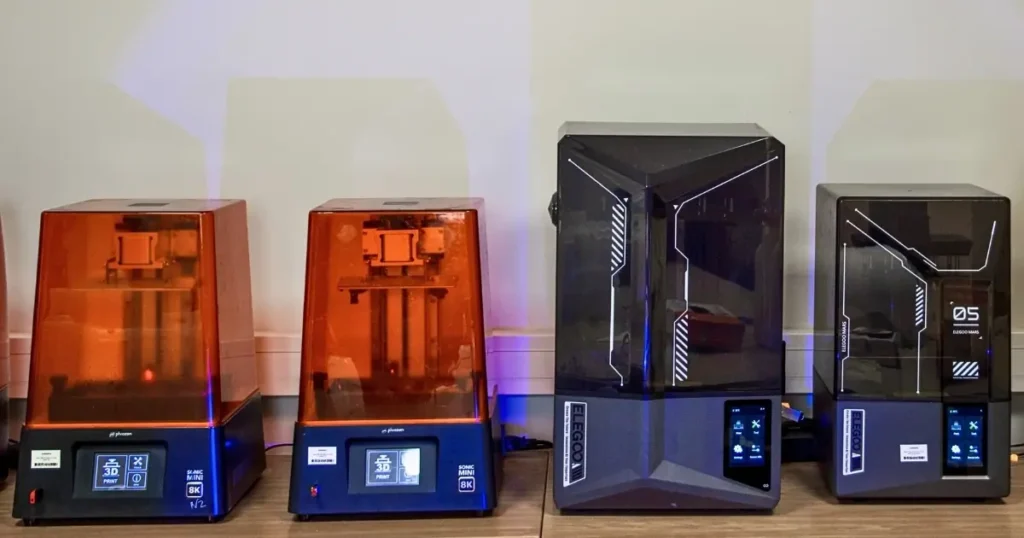
What This Guide Offers
In this guide, we’ll guide you through all the essentials for scaling your 3D printing miniature business. You’ll learn how to establish a high-volume production line, expand your market reach, and maintain a smooth operational flow. Whether you’re hoping to turn your hobby into a business or find ways to improve your current production process, you’ll find the strategies and tools you need to grow.
Along the way, we’ll share expert tips to help you boost production efficiency. And, if you want more tailored advice, you can book a one-on-one consultation with me, Andrius Darulis, co-founder of AmeraLabs, for personalized support in scaling up your miniature production.
This is the second blog post in the series; further blog posts will dive deeper into each subject.
Key Considerations for Scaling Your Miniature Production
Scaling your miniature production successfully takes careful planning. Here are some essential things to keep in mind:
Choosing the Right Technology: Think about the level of detail and the volume you need. MSLA printers are popular and easy to maintain, while DLP printers offer more consistent results for higher-quality prints. Pick the technology that fits your needs best.
Automation: Automating both printing and post-processing can save you time and help boost productivity, letting you focus on growing your business.
Business Mindset: Scaling up means shifting from a hobbyist approach to thinking like a business. This includes focusing on customer service, marketing, and building a strong brand.
Market Research: Take time to understand your market, learn about your competitors, and determine what makes your miniatures stand out.
Industry Insights – Tips from Miniature Makers
Experienced makers emphasize that scalability in miniature production hinges on several factors, including material choice, technology, and workflow optimization.
Expert Tips on Scaling Miniature Production:
- Advice from Olmec Games: Prioritize selecting materials that align with the EU’s General Product Safety Regulation (GPSR). Ensure these materials come with comprehensive safety documentation, crucial for passing safety assessments. This guarantees that your products are safe for consumers and simplifies compliance with EU standards. By doing so, you’ll meet regulatory requirements and enhance your brand’s reputation for safety and reliability.
- Advice from De Tinnen Roos: Scaling up miniature production requires the right tools and support. Investing in high-quality machines pays off in the long run, as better equipment ensures consistent results and reduces failed prints. Reliable support for your 3D printers is just as crucial – downtime can quickly become costly. If your business is growing, consider industrial-grade 3D printers. They offer superior precision, improved consistency, and the reliability needed for large-scale production.
- Advice from Maxs Magnificent Minis: Scaling your production includes more post-processing, inventory and file management. Those things can slow you down and make you less flexible – and flexibility is a big benefit of 3D-printing, so streamline your processes. Investing into higher quality printers will help you produce more parts more reliably, which is important to reduce unwanted waste such as failed prints – nobody wants to see minis taking a swim in the morning.
- Advice from 3D Minis Factory: Scaling miniature production with 3D printing requires a combination of high-quality equipment, efficient post-processing, and continuous innovation. Investing in reliable printers reduces failed prints and enhances consistency, while well-ventilated and structured post-processing areas streamline workflow and maintain quality. Additionally, staying updated with the latest advancements in materials and automation helps optimize production efficiency and keep a competitive edge in the industry.
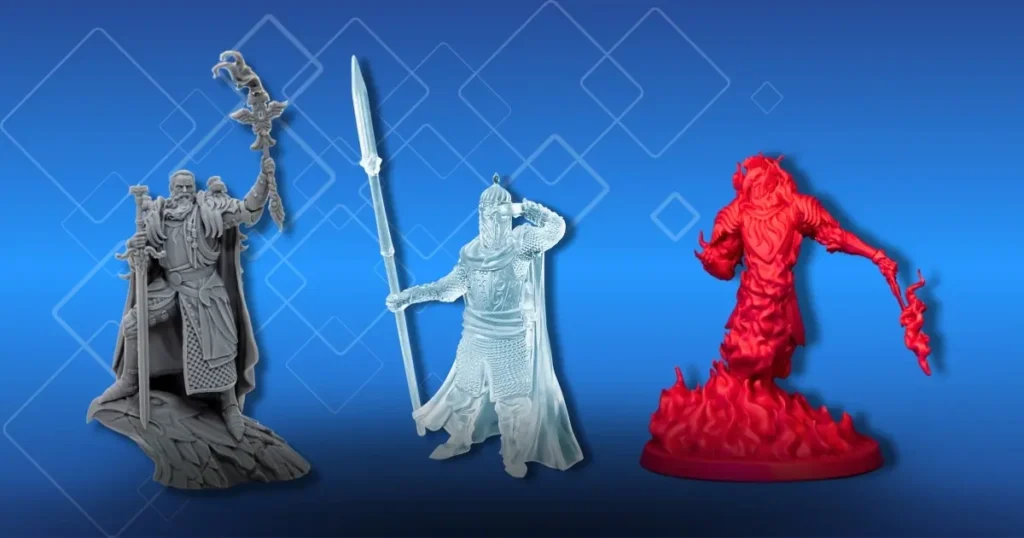
Benefits of Scaling Miniature Production with 3D Printing
Scaling your miniature production with 3D printing offers several key advantages. Here’s how it can help your business grow:
Cost Efficiency
As production volumes increase, 3D printing allows you to use economies of scale. This means the more miniatures you produce, the lower your cost per unit, making it easier to stay competitive while maintaining profitability. Buying resin in larger quantities can also be beneficial, as manufacturers often offer reduced prices for bigger orders.
Flexibility and Customization
3D printing lets you quickly adapt designs. Whether you need tweaks for a specific client or want to experiment with new styles, the flexibility of 3D printing allows you to make changes without disrupting production. This responsiveness helps you stay ahead of market trends.
High-Quality Detail
3D printing excels in precision. It creates highly detailed models with crisp features and smooth surfaces, surpassing traditional methods. This ensures your miniatures stand out and meet customer expectations for quality.
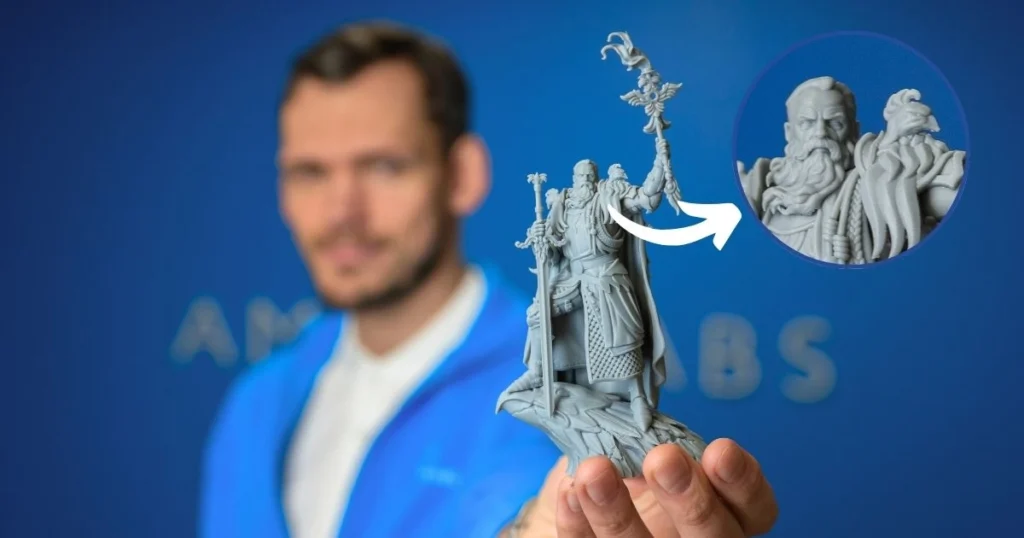
Faster Time-to-Market
3D printing speeds up production. Larger batches can be produced faster than traditional methods, enabling you to meet demand faster and get your products to market faster.
Real-World Success
Many businesses in tabletop gaming and collectibles have scaled successfully with 3D printing. These examples show how scalable 3D printing solutions can reduce costs, improve quality, and expand product offerings.
By scaling with 3D printing, you’ll unlock significant growth potential. Whether cutting costs, improving quality, or speeding up production, it’s a powerful way to strengthen your position in a competitive market.
Choosing the Right Resin: Key Factors for Scalability and Customer Satisfaction
When scaling up your miniature production, selecting the right resin is vital. Understanding the mechanical properties of different resins helps you balance quality, durability, and cost-effectiveness to meet customer expectations.
Precision and Detail
Resin’s ability to capture fine details is crucial for high-quality miniatures. Whether your designs are intricate or straightforward, choosing a resin that maintains precision ensures your models meet customer expectations.
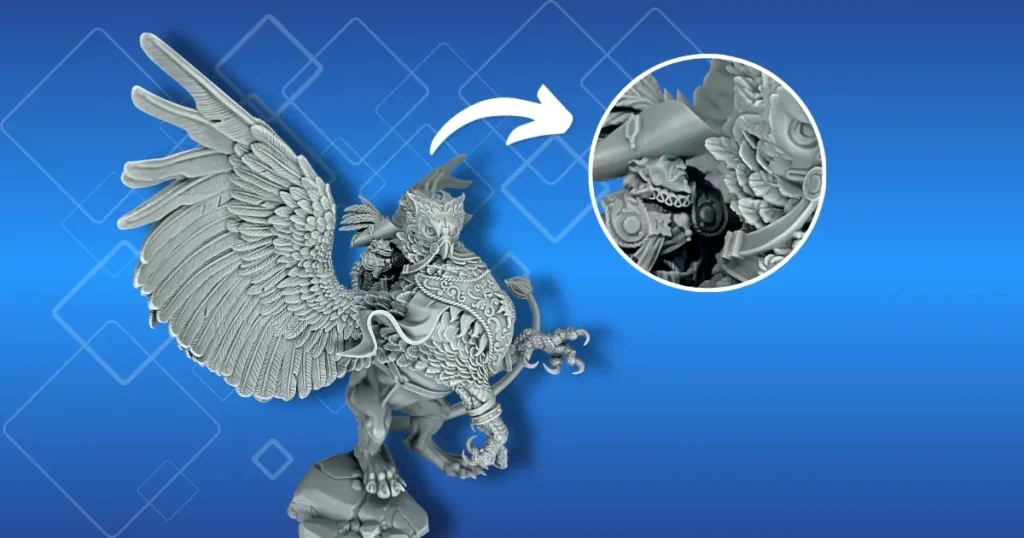
Durability, Strength, and Customer Satisfaction
Durability is a critical aspect for miniatures that will face frequent handling or gameplay. Choosing resins with the right balance of strength and flexibility ensures your products can endure both the rigors of play and the shipping process. Less expensive resins might seem cost-effective at first but can lead to breakages, damaging your product and reputation.
Consider the customer’s perspective: receiving a beautiful miniature and spending hours painting it only to have it break during the first session can be deeply disappointing. Even though the seller isn’t directly responsible for damage during use, such incidents can reflect poorly on product quality, potentially driving customers away to competitors.
The material you choose directly shapes the customer experience. By selecting durable, high-quality resin, you ensure your miniatures arrive undamaged, ready for use, and capable of enduring regular handling. This reliability fosters trust and promotes repeat business. However, sending out broken miniatures can result in customer frustration, negative feedback, and potential loss of future sales.
Choosing the right resin is pivotal for the quality of your miniatures, your brand’s reputation, and customer satisfaction. Investing in superior resin means your printed miniatures will be both visually appealing and sturdy, aiding in the effective scaling of your business. For an in-depth look at how resin properties affect your production, refer to our “Resin Mechanical Properties” guide.
Setting Up for Scalable Miniature Production
Scaling your miniature production requires both the right equipment and a streamlined workflow to handle increased production while preserving quality. With this in mind, here’s how you can optimize your setup:
Equipment Selection For Scaling Miniature Production
Choose high-quality resin 3D printers that match your business’s current production requirements. Focus on printers with larger screen sizes for broader build areas and those that deliver consistent print results. If you’re happy with your current printer setup, expanding with the same brand and model can simplify maintenance by reducing the need for diverse spare parts, like multiple types of screens. Read our blog post on choosing the best printer to gain more valuable insights into key resin 3D printer features.
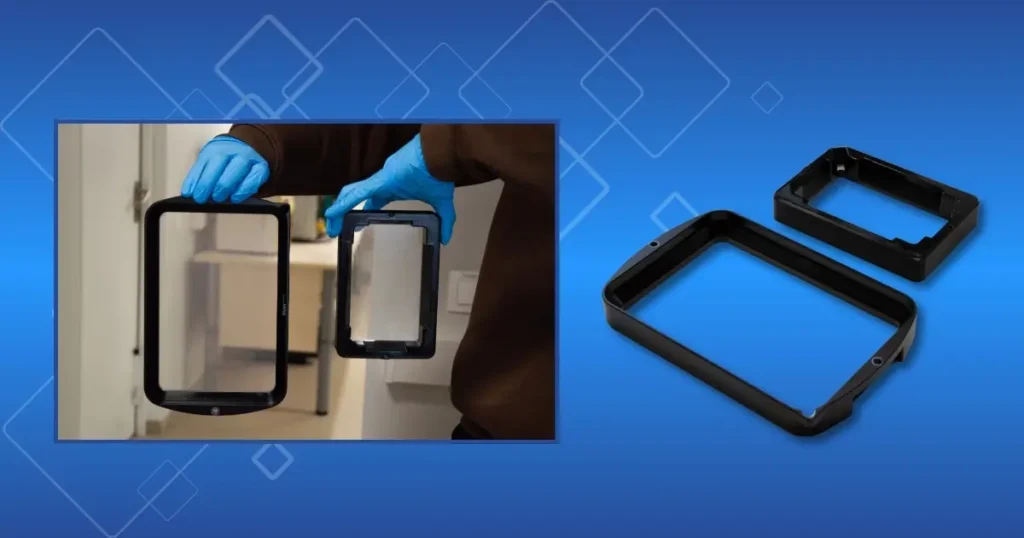
Upgrading Safety Measures
When upgrading your resin printing setup by adding new resin 3D printers, do not forget to upgrade your safety measures, too. The increased amount of 3D printers equals increased VOC emissions. This might negatively impact the health of the staff working in contact with the printers. To mitigate this risk, you should increase the ventilation throughput or upgrade your current HVAC equipment.
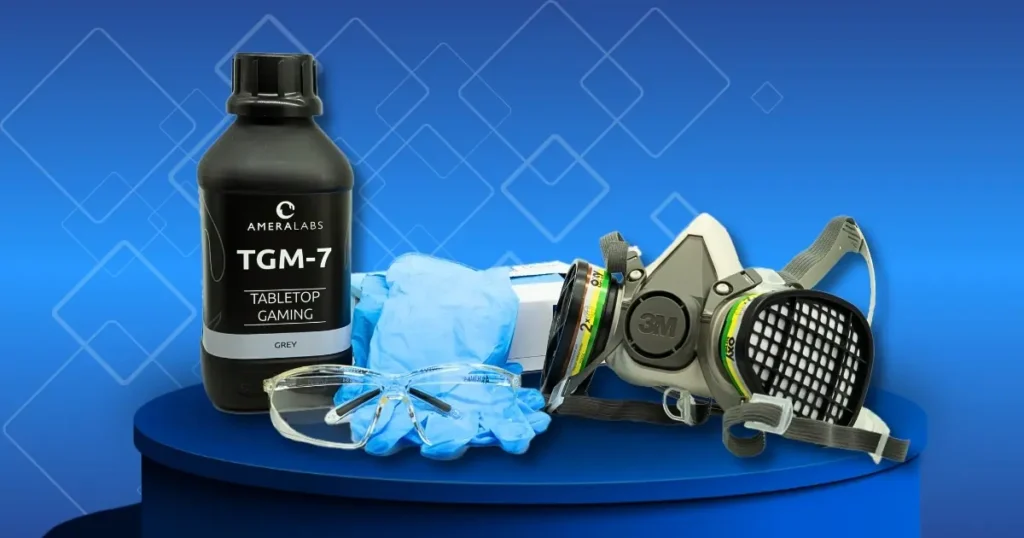
When scaling your 3D printing miniature business, consider ordering more respirator masks, nitrile gloves, and lab coats. The respirator VOC filters must be replaced regularly, so having backup ones is necessary. More tips on business resin 3D printing safety measures can be found in our blog post “Business Resin Printing Setup Guide & Checklist“.
Optimizing Workflow
With increased production, a streamlined workflow becomes imperative. Efficiently manage each phase from STL file preparation to printer setup, post-processing, and packaging. This organization facilitates handling larger orders while keeping efficiency high.
Organize the equipment used during the 3D printing process to make it readily available; do not mix the equipment used for uncured prints with those used for post-cured ones. This will help you maintain the cleanliness of your workspace and avoid accidental contact with uncured resin.
Using Pre-Supported STLs
Utilize pre-supported STL files to bypass the time-consuming task of manual support placement. This conserves time and minimizes errors, leading to more consistent prints and less material waste.
If you create the miniature STLs yourself, consider hiring a 3D model supporting service specialist to save time.
Automation
Automating post-processing tasks such as resin washing and curing can dramatically accelerate production. This automation allows you to concentrate on the printing process itself, ensuring that your miniatures are ready more quickly. By establishing clear, step-by-step procedures, you save time and significantly enhance the volume of your miniature production.
Moreover, the ability to start prints remotely is highly beneficial when you’re not in your printing area. This feature helps maximize your production by eliminating periods of inactivity.
Incorporating automation into printing and post-processing stages will substantially increase overall productivity.
Checklist for Scaling Miniature Production
A checklist is a great way to stay organized and spot potential bottlenecks. It should cover everything, from equipment maintenance to resin inventory tracking. Check out our Business Resin Printing Setup Guide & Checklist for a detailed guide.
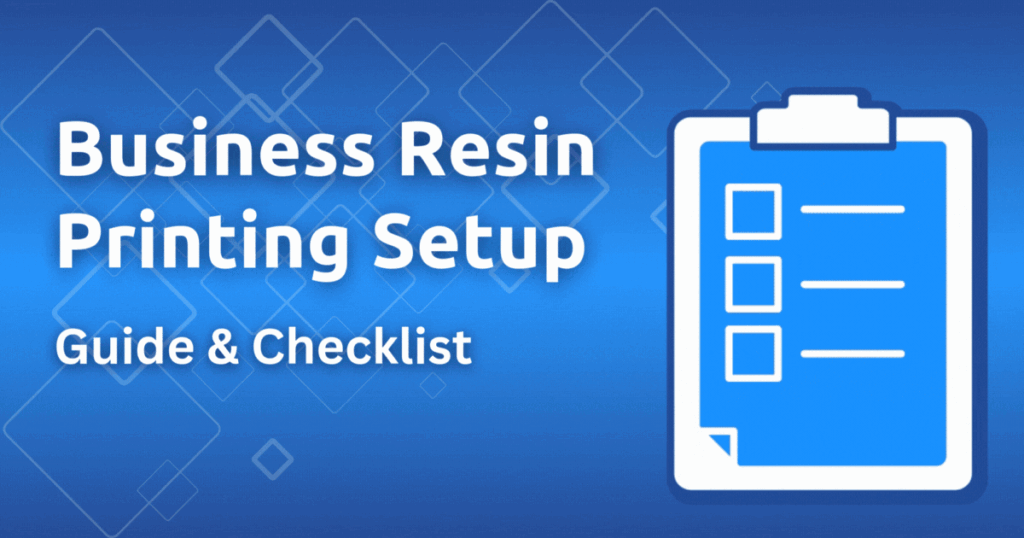
Optimizing both equipment and workflow is key to scaling your miniature production efficiently while maintaining high-quality results.
Challenges in Scaling Miniature Production
Scaling your miniature production can present some challenges, but with the right strategies, you can overcome them. Here are some common obstacles and how to tackle them:
Quality Control As production volume grows, maintaining consistent quality becomes crucial. The risk of variations in print quality increases with higher output. To ensure consistency, set up quality checkpoints throughout the process – before printing, during printing, and post-processing. Regular inspections will help catch issues early, preventing wasted materials and time. Consider quality lighting and magnifying equipment for miniature inspection.
Quality Control
As your production volume increases, maintaining consistent quality across all miniatures becomes critical. With higher output, the risk of variations in print quality also rises. To manage this, establish quality checkpoints at various stages of production – before you start printing, during the printing process, and after post-processing.
Regular inspections at these points will help you detect problems early on, thereby saving materials and time that would otherwise be wasted on substandard products. It’s also advisable to use quality lighting and magnifying tools for inspecting the miniatures, ensuring that even the smallest details are up to standard.
Material Waste
As your 3D printing business scales, resin waste increases, affecting both costs and the environment. To mitigate this, fine-tune your printer settings by calibrating for precision and adjusting layer height and print speed for efficiency. Minimize support structures to reduce waste, as failed prints contribute significantly to waste volume. Streamline by grouping similar-height miniatures for each batch to optimize printing sessions, preventing unnecessary increases in printing time due to varying heights.
Be cautious with the use of cleaning agents like IPA, order in larger volumes to save money, explore recycling options such as filtering contaminated IPA.
Monitor resin usage closely to prevent overstocking or shortages, which can lead to waste or production halts. Regular waste audits can highlight inefficiencies. Effectively managing material waste not only reduces expenses but also enhances your business’s sustainability, making it more attractive in today’s eco-conscious market.
Production Bottlenecks
Bottlenecks can disrupt any production stage, from file preparation to the final packaging. Address these issues by investing in equipment capable of managing higher volumes, such as additional printers and more washing and post-processing systems. Consistently reviewing your workflow allows you to spot and resolve slowdowns promptly.
Upfront Investment for Scaling Miniature Business
Scaling miniature production demands upfront equipment, technology, and space investment, which might seem daunting but is crucial for long-term growth. High-quality resin 3D printers are essential for boosting production capacity alongside ancillary equipment like washing stations and curing ovens. For technology, consider software for design, print management, and business operations. To cut costs spent on 3D modeling software, consider Blender, which is a free alternative that offers design creation and modification capabilities. As for space, plan for both current and future needs, including areas for quality control or packaging.
Manage this investment by starting small, focusing on what’s necessary for your current scale. Reinvest profits into the business for additional equipment or space as your cash flow allows. Alternatively, explore leasing or financing to spread out costs, especially for high-value items. This approach ensures sustainable growth, balancing initial expenses with the potential for long-term expansion.
Staffing Needs
As your production grows, you’ll need more hands on deck. Hiring skilled employees with experience in 3D printing can help you maintain quality standards. If hiring is not an option, consider outsourcing tasks like packaging or customer support to keep things running smoothly.
Scaling your production will come with its challenges, but with careful planning and the right strategies, your miniature business can thrive.
Look for employees with a strong background in 3D printing or related fields. Such individuals can bring valuable expertise to your operation, ensuring that quality standards are not only met but exceeded. They can handle complex printing tasks, troubleshoot issues, and optimize the printing process for efficiency.
If you find it challenging to hire experienced staff, consider investing in training programs. Training can turn enthusiastic but inexperienced individuals into skilled workers who understand your specific production needs and quality standards.
If your budget or immediate business requirements don’t allow for expanding your in-house team, outsourcing could be a viable alternative.
Intellectual Property in Miniature Production Scaling
When scaling your miniature production business, intellectual property (IP) management is essential to avoid legal pitfalls. Ensuring you have the right to use designs, particularly from third-party sources, is crucial. This includes understanding copyrights, where you need explicit permission or licenses for commercial use. Be cautious with trademarks to avoid using characters or symbols associated with other brands without rights. Even patents could come into play if your production methods or designs are unique.
Securing permissions involves obtaining proper licensing that outlines usage scope and royalties. You might also consider using open-source or Creative Commons designs, but always check the license terms. Creating your own original work not only sidesteps these issues but also builds your brand’s identity.
Compliance in sales means specifying IP rights in user agreements, especially for digital files or custom orders, and understanding export laws if you sell internationally.
Monitoring and enforcement include regular audits to ensure compliance and watch for IP infringements. Legal advice can be invaluable for complex scenarios. Educating your team about IP rights and considering IP insurance for legal protection are also wise steps. Proper IP management safeguards your business as it grows.
Optimizing for Efficient Miniature Production
Scaling your miniature production efficiently without sacrificing quality requires smart strategies. Here are some expert tips to help optimize your process:
Optimize Resin Usage When Scaling Miniature Production
Resin costs can quickly add up. Adjust print settings like layer height and exposure time based on your model’s complexity to get the most out of your material. For detailed miniatures, using thinner layers helps in retaining sharp features. Printing multiple miniatures in one batch maximizes your printer’s build volume, reducing waste.
Use Color Resins for Differentiation
Offering miniatures in various colors can set your products apart and attract customers who don’t want to paint or prefer ready-to-use models in different factions or themes. Color resin variants add value to your products and eliminate the need for post-processing, making them an easy upgrade.

Streamline Custom Orders
Custom orders can slow down production if not managed well. Set up a system to track customer preferences – consider a digital catalog or custom order form. Offering personalized options like size (or miniature scale), color, and layer height is excellent, but having a streamlined process ensures you avoid delays.
Increase Post-Processing Efficiency
Post-processing can be a bottleneck in production. Invest in larger washing and curing stations to speed up cleaning and curing, ensuring consistent results and reducing the time spent. Consider using multiple washing stations for different stages of washing. You can perform an initial wash in the first washing station, wash the print again in the second station, and perform one final wash in the third one. This will reduce the contamination of IPA and produce cleaner, nonsticky prints.
Consider getting an air compressor for drying prints to speed up things even further. This can save you more time by blazing through the drying step and moving straight to post-curing.
Stay Informed on Industry Trends
3D printing is constantly evolving. Keep up with the latest materials, techniques, and tools by following blogs, forums, and social media. Testing new methods can help you find what works best for your production. Follow relevant topics on social media and subscribe to 3D printing newsletters to be among the first to learn about the latest breakthroughs and new material announcements.
Leverage Tutorials and Resources When Scaling Miniature Production
Learn from experienced makers through tutorials, videos, and courses. These resources can save time and help you avoid common mistakes.
By implementing these tips, you’ll boost the efficiency and scalability of your miniature production while maintaining top-notch quality.
Partner with AmeraLabs and Book a Call
At AmeraLabs, we’re here to support you every step of the way as you scale your miniature production with 3D printing. Whether you’re just starting or looking to refine your existing operations, we can offer the expertise and guidance you need to succeed.
With years of experience in the 3D printing industry, we understand the challenges of scaling up. From choosing the right resin to fine-tuning your workflow, we’re dedicated to helping you grow your business efficiently while keeping quality at the forefront.
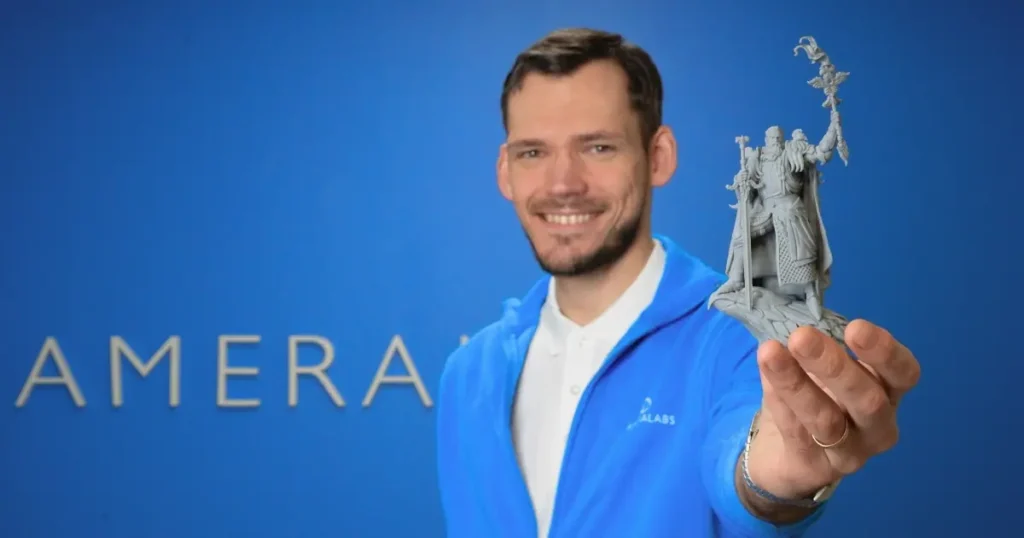
I’d love to help you take your miniature production to the next level. Book a call with me, Andrius Darulis, co-founder of AmeraLabs. Together, we’ll discuss your production goals, any challenges you’re facing, and how we can help streamline your processes for scaling up. Whether you need guidance on equipment, resin selection, or starting from scratch, I’m here to provide tailored solutions for your business.
Don’t let scaling become a hurdle. Let’s chat and explore how you can achieve higher-volume production with ease. Book your call today and start optimizing your miniature production!
Related Posts:
- Business Resin Printing Setup Guide & Checklist – Thinking of going big with minis? This helps you set up without the chaos.
- 9 Settings to Change for Faster Resin 3D Printing – Need to crank out more prints? These settings keep things moving.
- 3D Printing Miniatures Guide – Need somewhere to begin? This covers the basics so you’re not lost.
- Resin 3D Printing Troubleshooting Guide – Hitting snags with bigger batches? This sorts them out fast.
- Uncover Resin Safety Myths 3D Printing – Worried about resin safety as you grow? This clears up what’s real.
Growing your mini game? Swing by our shop for resins that make it smoother!

